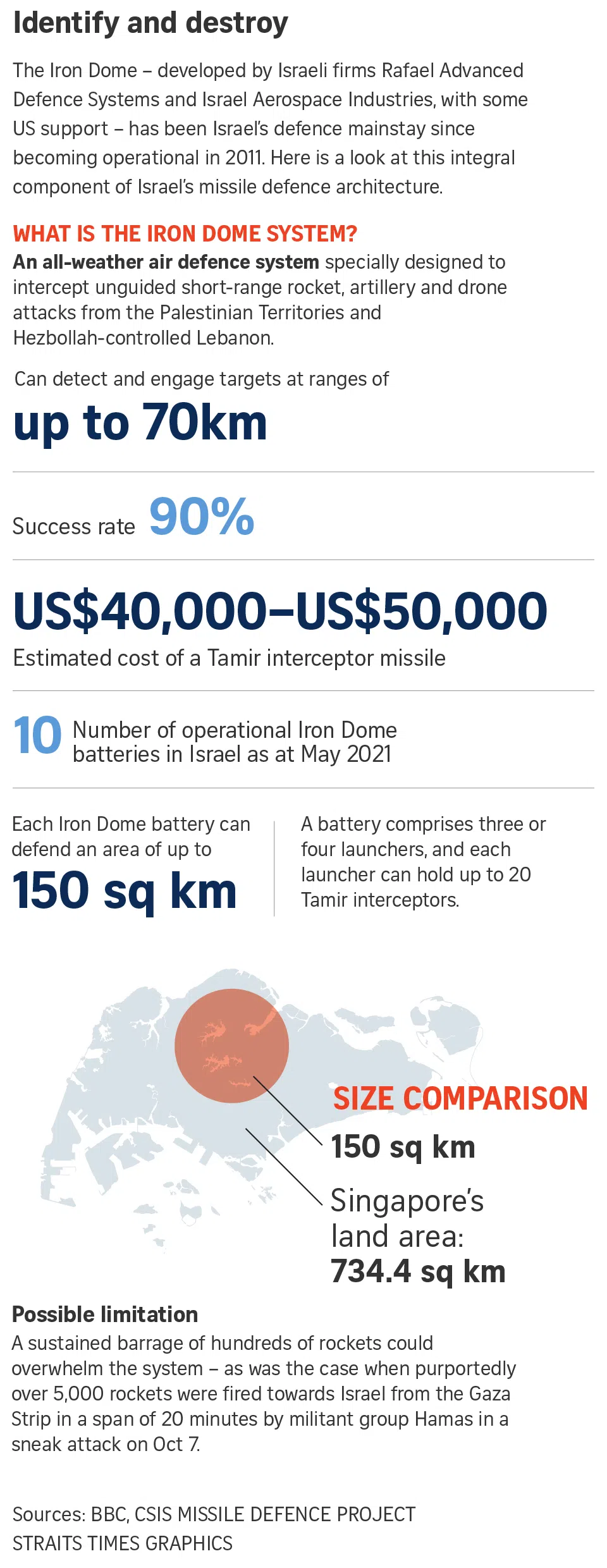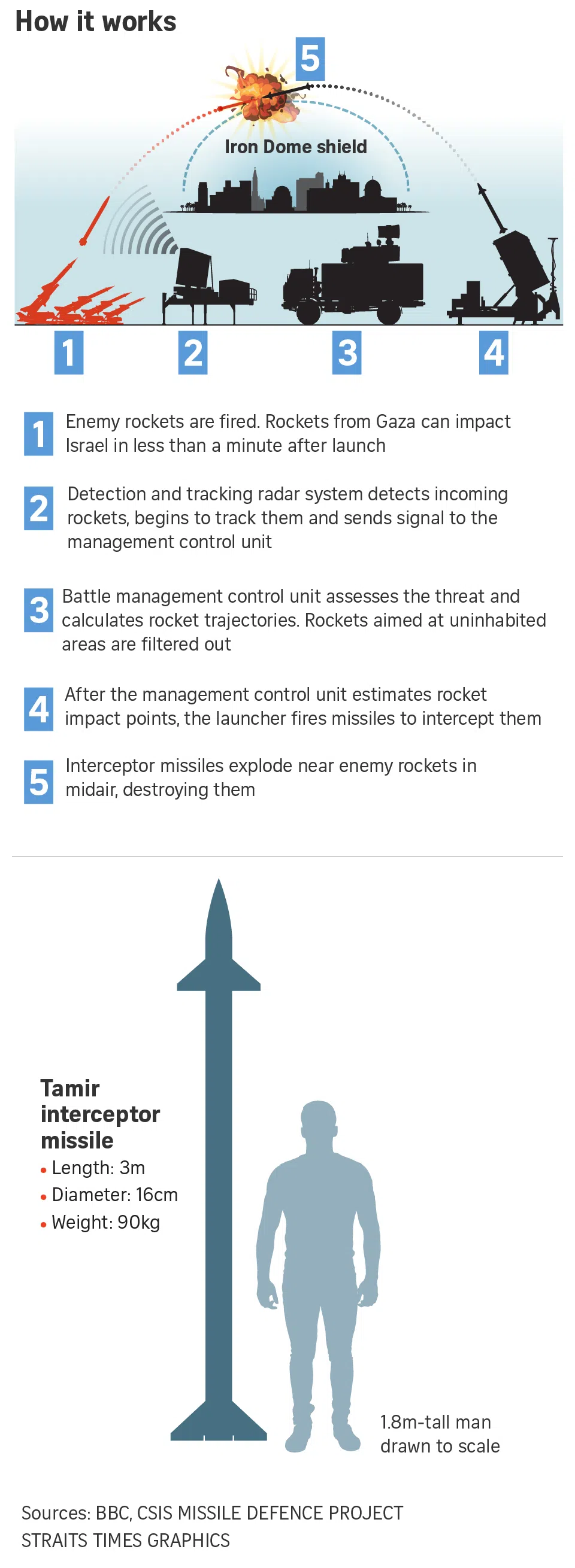What is Israel’s Iron Dome anti-rocket system?
Sign up now: Get ST's newsletters delivered to your inbox
Follow topic:
JERUSALEM – Palestinian militants in the Gaza Strip fired more than 3,000 rockets into Israel last Saturday, in what Prime Minister Benjamin Netanyahu called a declaration of war.
The vast majority however caused little or no harm, largely because of Israel’s Iron Dome air defence system
Why was Iron Dome created?
Iron Dome was created to cope with mortars and rockets shot into Israel
How does it work?
A sensitive radar detects an incoming round coming from 4km to 70km away and predicts its trajectory and point of impact. A control centre processes that information and connects to a launcher that shoots a missile to destroy the round.
The system is designed to respond only to projectiles that pose threats, particularly to population centres. It holds fire on rockets calculated to land in empty terrain and thus conserves missiles, which is especially important in the case of massive incoming rounds.
The cost of each missile is about US$40,000 (S$54,700) to US$50,000, according to a researcher at Israel’s Institute for National Security Studies.
The batteries are mobile, and as of mid-2021 Israel had ten of them deployed throughout the country, according to United States military contractor Raytheon Technologies, which in 2014 began co-producing Iron Dome with the system’s originator, Israel’s Rafael Advanced Defence Systems.
Each battery has three to four launchers with the aim of defending a 155 sq km populated area, according to Raytheon. The system is designed to work effectively in all kinds of weather.
Who funded it?
Iron Dome was originally developed without US assistance, but in 2011 Israel’s key ally began backing the programme financially.
Once the US invested in Iron Dome, Congress pressed for technology sharing and co-production, which is how Raytheon entered the picture. It makes components for the interceptors. Today, some of the anti-rocket missile battery is made in the US.
American support for the system is part of a larger package of US military aid to Israel, which according to an agreement between the two countries will total US$38 billion in the years 2019 to 2028.
What are the ramifications of the Iron Dome’s success?
Iron Dome has saved many Israelis from death or injury. That, arguably, has various knock-on effects.
For one thing, it gives the Israeli government time and political space to decide when and how to respond to rocket attacks. In some cases, it has meant Israel has opted against a ground invasion of Gaza.
Some analysts argue that the Iron Dome’s protection lulls Israelis into a false sense that they can afford to ignore the age-old conflict with the Palestinians rather than engage in diplomacy to resolve it. BLOOMBERG



